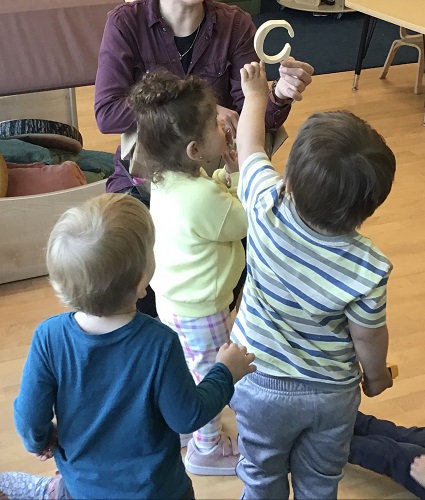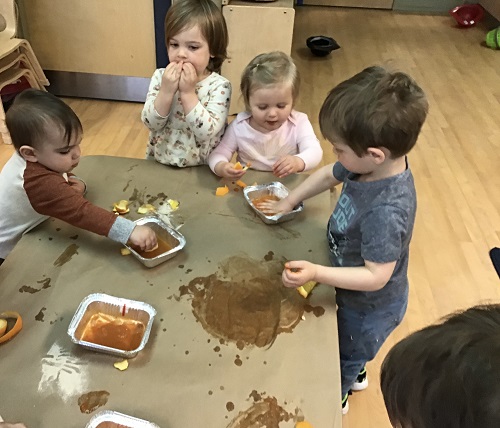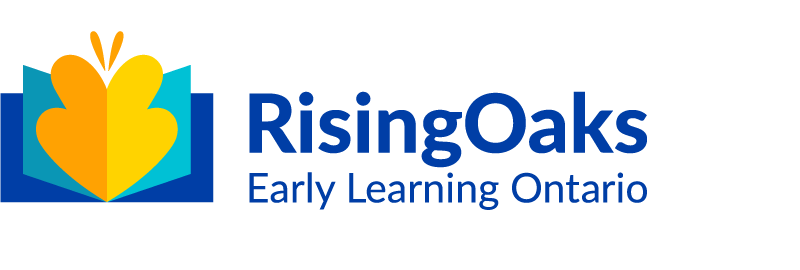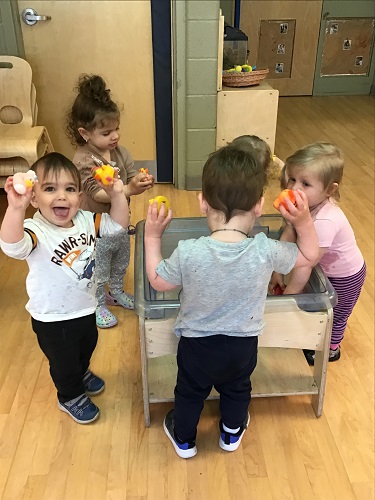This month in the toddler room we have been exploring the alphabet and phonics. The interest started late last month when one of the toddlers displayed their ability to sound out letters when observing the “Snail” label above our snail terrarium. We saw other examples of alphabet awareness that varied in developmental levels. For other toddlers we noticed the continued interest in identifying letters through their play. The interest was displayed while reading litterateur and letters on their clothing. For some toddlers the interest is heavily focused on mouth formations and how to make these new sounds and learn how a particular phonological sound is linked to a letter. With this interest in mind the toddler educators prepaid for an adventure in learning all 26 letters. In doing some research we learned that there is a sequence of phonic sounds that infants and toddlers will discover first on their own (babble). These letter sounds are: P, B, M, N, T, A, and D are among the easiest sound to make. As a result of fine motor mouth muscles these are the letters most 1-2-year old’s will begin to master. 3-4-year old’s will refine their fine motor muscles to make H, G, F, S, Y, and H sounds. The hardest sounds to make are I, R, S, Z, V, J, Th, Sh and, Ch. To kick off our letter learning adventure we first started with the easiest letters, two of which will be explored each week – supported by related play experiences each day. The first two letters we chose where B and M. One of the activities we did that week was a baking experience. We made banana blue berry muffins that required mixing the ingredients with a masher – did you catch all the M and B words? The toddlers sure did! So far, we explored the letters E, D, A, O, T, C. each week we took a moment talk about each letter, and the sound it makes. Encouraging memory recall we also review the previous letters we have done. The decision on what letter to explore is based on what interests emerge. For example, the toddlers enjoyed roaring and stomping like dinosaurs as well as dinosaur books for a few days in a row. This led to the decision to explore the letter D and emphasis the D sound in conversations. A few play experiences that fosters each letter as educators co-play has been: playing in water with rubber ducks, figure painting what would become the top of a tree depiction displayed in our class room, painting with orange flavoured water with orange peels, making paper airplanes to through during outdoor time and melting dinosaur eggs. Seeing these phonological skills being displayed so early in our 22-month old’s – 31-month old’s. Has led our toddler team to dig further into toddler learning and development to support emerging skills. This left us with one question, can toddlers learn to read? So far, we have discovered, Yes! Yes, they can! The First thing to establishing this is building a sense of phonological awareness. Saint John Paul II parents, please be on the look out for recourses that we will be sharing with you so that you can also be on our literacy journey.
